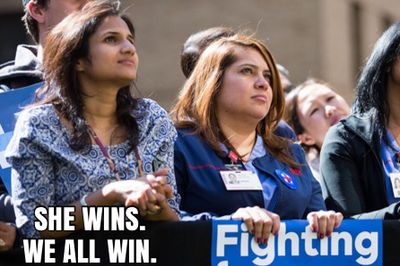Back in 2004, I was a senior partner in consulting, happily married with two great kids, and living in a big apartment with a killer view. Perfect, right?
Not exactly.
I felt invisible.
Actually, I was invisible.
Leadership roles eluded me. With a lot of introspection, I concluded that I was missing some secret ingredient but that I could find it by searching. So I set out on a journey of ten years. I traveled the globe to interview successful women leaders. First dozens and then hundreds of remarkable women shared their stories of courage and achievement.
Somewhere along the journey, I learned that I am not missing anything. I learned that we are not missing anything. We lock up our power to protect ourselves. When we find the courage to release it, great things happen.
And that's when it hit me: The women who made it to the top – who succeeded despite organizations set up to favor men – are Exhibit A for what the world is missing.
Let the research show… no drum-roll needed.
Remarkable women bring capabilities that turn good leaders into great ones:
Anchored in meaning
A learning mindset to see possibilities even in crisis
Focus on the community, respecting all views and built on trust
New voices that bring accountability and action
Positive energy and emotion to foster creativity and mobilize followership.
Of course, not all women leaders have these capabilities and some men leaders do.
Here's the kicker: These are the very capabilities urgently needed in fast-changing, unpredictable, and volatile environments – exactly what most companies and countries are experiencing today. But less than five percent of companies or countries are led by a woman.
Strong barriers hold women back. Even when the (male) leader wants to tear them down with unshakable facts, they persist.
And yet the business case to advance women is rock solid.
We found that with three or more women on the top team, organizations are healthier. Employees feel that every dimension – from setting direction to establishing a good work environment based on values – is stronger. Financial performance for those companies with women at the top is higher. Executives globally believe that women bring different and needed capabilities to leadership – like role modeling, setting expectations and rewards.
The public wants leaders to have the characteristics that they deem 'feminine' such as reasonableness, thoughtfulness, caring, and a focus on planning for the future. Those characteristics are stronger than the traditionally 'masculine' ones of competitiveness and aggressiveness.
Other research finds that women bring new voices to government, with a focus on education, health, and community-building – with a long term view.
I could go on and on because new research continues to reinforce why women leaders makes great sense.
Barriers create an invisible wall that keeps highly talented women from reaching their potential. The wall hurts every organization that has one. Its foundation is structural; for example, women have a harder time breaking into the informal networks and opportunity flows. Family policy and practices are its building blocks. Women bear our society's children and take care of them, and companies are slow to adapt to this common good. As the wall grows, personal issues strengthen it. Many women suppress their ambition or allow fear to hold them back.
All that is true, but it is institutional mindsets that make the wall resistant to senior leadership efforts. Also known as bias, plain and simple.
We're seeing this play out on the national stage.
A woman is running for President who has a long list of qualifications. She leads with purpose, focused on issues of importance to all women and children – like healthcare, childcare, a decent wage, education, paid family leave, and more. She knows her way around the Hill. She has visited almost every country in the world. She has a strong educational background with years of service.
You'd think she would be a shoe-in.
Bias changes shape making this last barrier the hardest to pull down. The voices of opposition tee it up with crowd-pleasing flourish.
We've all heard people recite their beliefs as facts: Hillary is unattractive in her pants suits; she is not healthy enough to serve; she is crooked; she is wily. Mindsets like these turn Hillary into the archetype of the evil woman. She is every myth from Eve to Cruella Deville. People are hooked.
You know better.
Hillary is a remarkable woman leader.
Would you vote for Hillary because she is a woman?
Last week, I posed that question at two meetings – one in Atlanta for women who work in operations and one in San Francisco where Lean In regional leaders gathered from around the world. "No," they said, "We do not vote based on gender. We vote for the candidate that aligns with our values and our priorities."
So don't vote for Clinton because she is a strong woman leader who can help us tear down the wall that holds women back from advancing.
Or do. It's your decision.
Vote for Hillary because she has the experience, relationships, skills and know-how to lead our government. Because she has the best qualifications.
Vote for Hillary because she aligns with your values and your priorities.
Vote for Hillary because she brings the leadership this country needs, and between the two candidates, you've made a reasoned choice.
Vote for Hillary because women get s- - t done.
Vote for Hillary because it's your responsibility to vote even though you don't feel like voting at all. And you're a responsible person.
Vote for Hillary because voting is like crossing the line from letting things happen to you to making things happen.
Maybe you feel invisible, too, and if you do, voting is a way to stand up and be counted.
That's why women should vote.
That's why women should vote for Clinton.
And men should, too.
###
August 15, 2016
